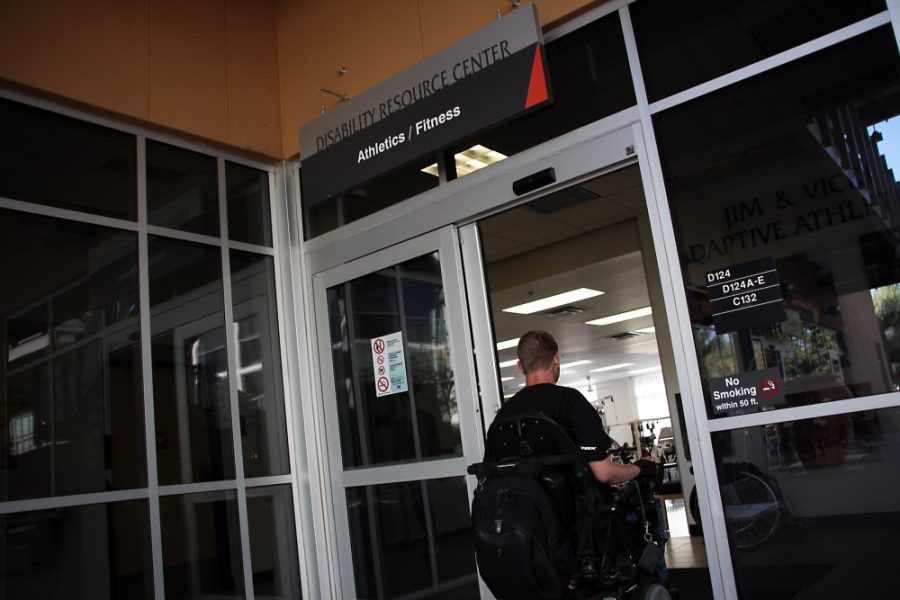Architecture senior Wes Ward came to the UA five years ago for the Disability Resource Center.
Ward uses an electric wheelchair to navigate campus on a daily basis. The DRC helped him find wheelchair-accessible living.
“I live in VDP (Villa del Puente Residence Hall),” Ward said. “It’s super accessible. I have my own room with accessible bathroom.”
The DRC strives to make a more equal and accessible environment on campus for those who have disabilities, especially as enrollment for students with disabilities continues to rise. From 2009 to 2010, the number of disabled students in the UA freshmen class went from 220 to 270, an 18 percent increase. In 2009, the UA employed 99 faculty members with disabilities.
According to the 2009-2010 report from the center, 1,485 students used DRC services, including 1,026 who took exams at the center.
Sue Kroeger, the director of the center, said the DRC fights to provide equal opportunities for students with various types of disabilities and tries to change attitudes toward people with disabilities.
Kroeger herself is in a wheelchair and said she is looked at differently every day, as though something were “wrong” with her.
She said the UA needs to focus less on what is “wrong” with an individual with a disability and more on the design and accessibility of the UA as a whole.
The DRC is one of the most well-staffed disability centers in comparison to other universities, said Dawn Hunziker, coordinator of assistive technology at the DRC. She said the university’s staff has close to 30 people at the center while other universities have about three to five.
Kroeger said the center is trying to make the campus more accessible by making the process easier for individuals who need accommodations for their disabilities.
“What does a non-disabled student need to take an exam?” she asked. “They need to show up.”
Environmental accessibility is the main focus of the center, Kroeger said. She said it is trying to make everything more accessible, including the way disabled students move around campus and the way they access the information being taught.
Ward said that even though most buildings are extremely accessible there are some that pose an inconvenience for him because there is no other way to get into them than an alternate entrance from the main one.Ward said he finds most buildings accessible, but is sometimes inconvenienced when he’s forced to find alternative entrances into buildings, such as Sahuaro Hall, which has stairs leading to its main entrance.
Kroeger said when a specific purchase needs to be made to make an accommodation for a disabled student, it is thought of as “expensive.”
“The public sometimes sees disability as high cost,” Kroeger said.
Specific accommodations include sign language interpreters, captioning for visual media, note-takers and exam accommodations such as a time extension.
In addition, a program called Jobs With Access Speech is provided for blind students. The text-to-speech program does not require a keyboard or mouse.
Although these are regularly provided services for students with disabilities, exact accommodations depend on the individual case.
Kroeger said the university also has the best adaptive athletic program in the country. Competition is a part of the human condition and everyone should have the same right to compete in a sport of their choice, she said. According to the DRC report, 75 students with disabilities participated on sports teams in 2009-2010.
The DRC prides itself on being one of the best programs in the country, Kroeger said.
“We believe that access is our problem, she said, “not the students.”









